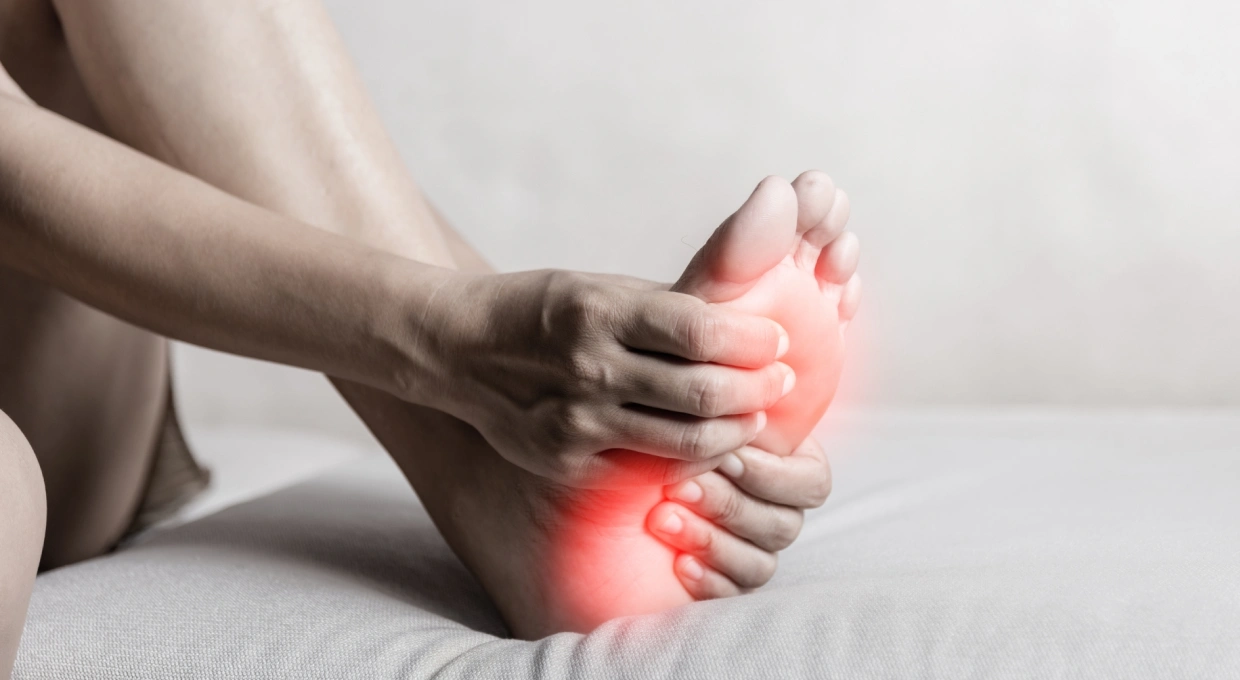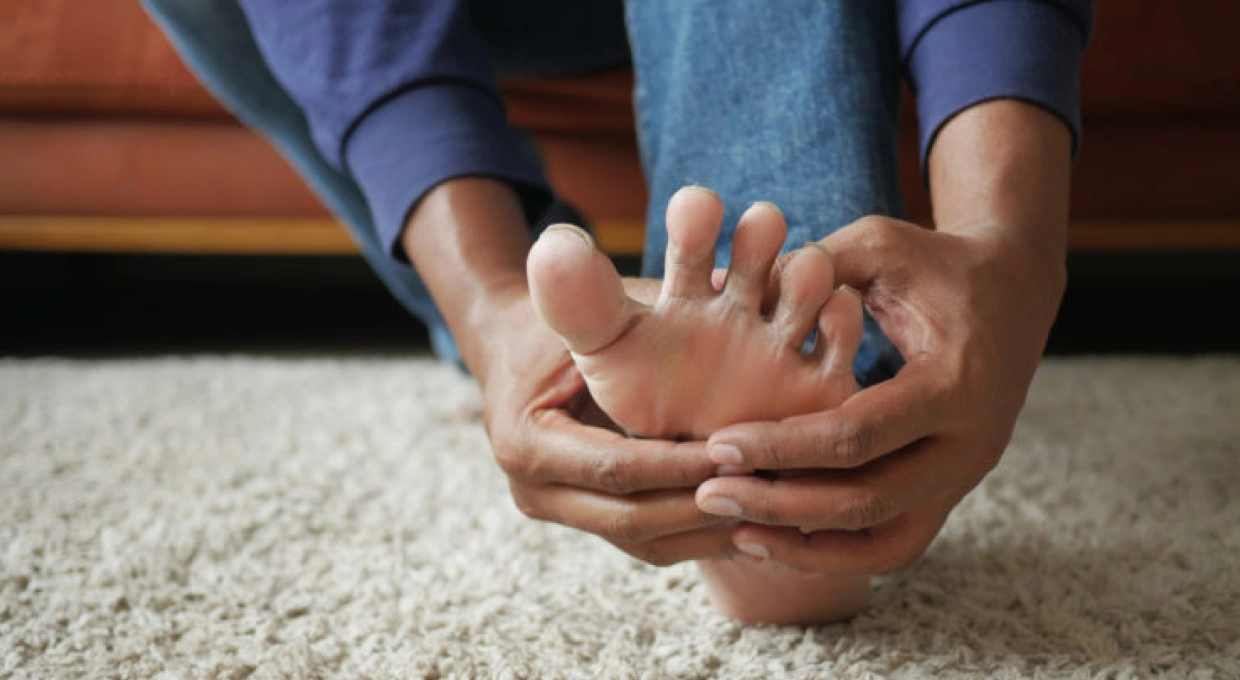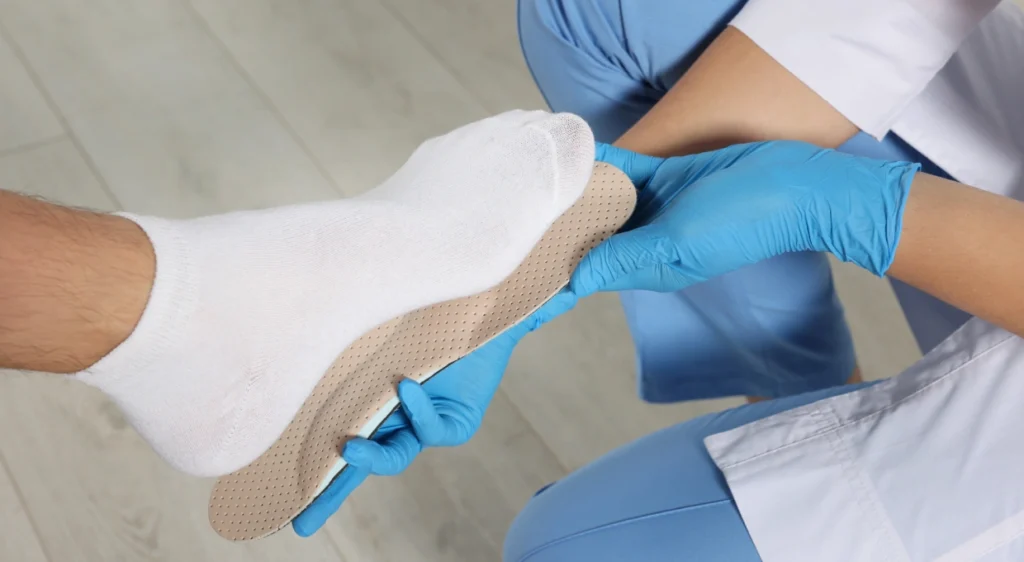Foot pain is a common complaint that can have a significant impact on quality of life. The feet support the entire weight of the body and are constantly exposed to pressure, so it is not surprising that they can develop problems that cause pain. Understanding the underlying causes and seeking appropriate treatment is critical to relieving pain and preventing complications.
Common Causes of Foot Pain
1. Plantar Fasciitis: Plantar fasciitis is one of the most common causes of heel pain. It occurs when the thick band of tissue on the sole of the foot (plantar fascia) becomes inflamed or overly tight. The pain is typically felt in the heel and is most acute upon arising in the morning or after prolonged periods of rest. Bunions: Bun ions are bony bumps that form at the base of the big toe. They can be painful, especially when wearing tight shoes. Bunions can also cause swelling and redness around the affected joint. Morton’s neuroma: This condition involves thickening of the tissue around the nerves between the toes, which can cause a sharp pain or burning sensation. It is most common between the third and fourth toes and can be exacerbated by improper footwear. 4. Hammertoes: Hammertoes are deformities that cause one or more toes to bend downward at the middle joint. This condition can cause pain when walking or wearing certain types of shoes, and is often associated with wearing shoes that do not fit properly. 5. Arthritis: Arthritis, particularly osteoarthritis and rheumatoid arthritis, can affect the joints of the feet, causing pain, stiffness and swelling. Arthritis can limit mobility and make walking a painful activity. 6. Flat Feet: Flat feet occur when the arches of the foot are absent or very low, resulting in uneven weight distribution and increased stress on the feet. This can lead to pain in the arches, heels and knees, especially after standing or walking for long periods. 7. Ingrown Toenails: Ingrown toenails occur when the edges of the toenail grow into the surrounding skin, causing pain, swelling and infection. They are common on the big toe and can be aggravated by wearing tight shoes or improper nail trimming.

Treatments for Foot Pain Relief
Treatment of foot pain depends on the underlying cause, but some general approaches include: Proper Footwear: Wearing well-fitting shoes that provide adequate arch support and cushioning can prevent and alleviate many foot problems. It is important to choose shoes that do not squeeze the toes or cause friction. 2. Orthopedic Insoles: Custom orthotic insoles can help correct biomechanical problems and provide better support for the feet, relieving pain associated with conditions such as flat feet or plantar fasciitis. Physical Therapy: Stretching and strengthening exercises can improve flexibility and strength in the feet, reducing pain and improving mobility. A physical therapist can recommend a specific routine based on the patient’s condition. 4. Medications: Nonsteroidal anti-inflammatory drugs (NSAIDs) can help reduce inflammation and pain. In some cases, doctors may recommend corticosteroid injections to relieve severe pain. 5. Surgery: In more severe cases, where conservative treatments are not effective, surgery may be necessary. This may include correction of bunions, repair of neuromas or correction of deformities such as hammertoes. 6. Nail Care: Keeping toenails properly trimmed and taking care of foot hygiene can prevent problems such as ingrown toenails. In recurrent or severe cases, it may be necessary for a podiatrist to perform a minor intervention to alleviate pain.
Prevention of Foot Pain
Preventing foot pain involves adopting healthy habits and taking care of your feet on a regular basis: 1. Maintain a Healthy Weight: Maintaining a healthy body weight can reduce pressure on the feet and prevent the development of many painful conditions. 2. Stretch Regularly: Incorporating foot stretching exercises into your daily routine can improve flexibility and prevent problems such as plantar fasciitis. 3. Moisturize and Care for the Skin of the Feet: Keeping the skin moisturized and free of calluses can prevent cracks and other problems that could lead to infections or pain. 4. See a Podiatrist Regularly: Regular visits to a podiatrist can help identify and treat foot problems before they become painful conditions.
Conclusion
Foot pain can be debilitating and seriously affect quality of life. Identifying the underlying cause of the pain and following a proper treatment plan is critical to alleviating symptoms and preventing future complications. If you experience persistent foot pain, it is essential to seek the help of a podiatric specialist. At Clinica San Roman, we offer comprehensive, personalized care to treat your foot problems and help you regain your well-being and mobility.



